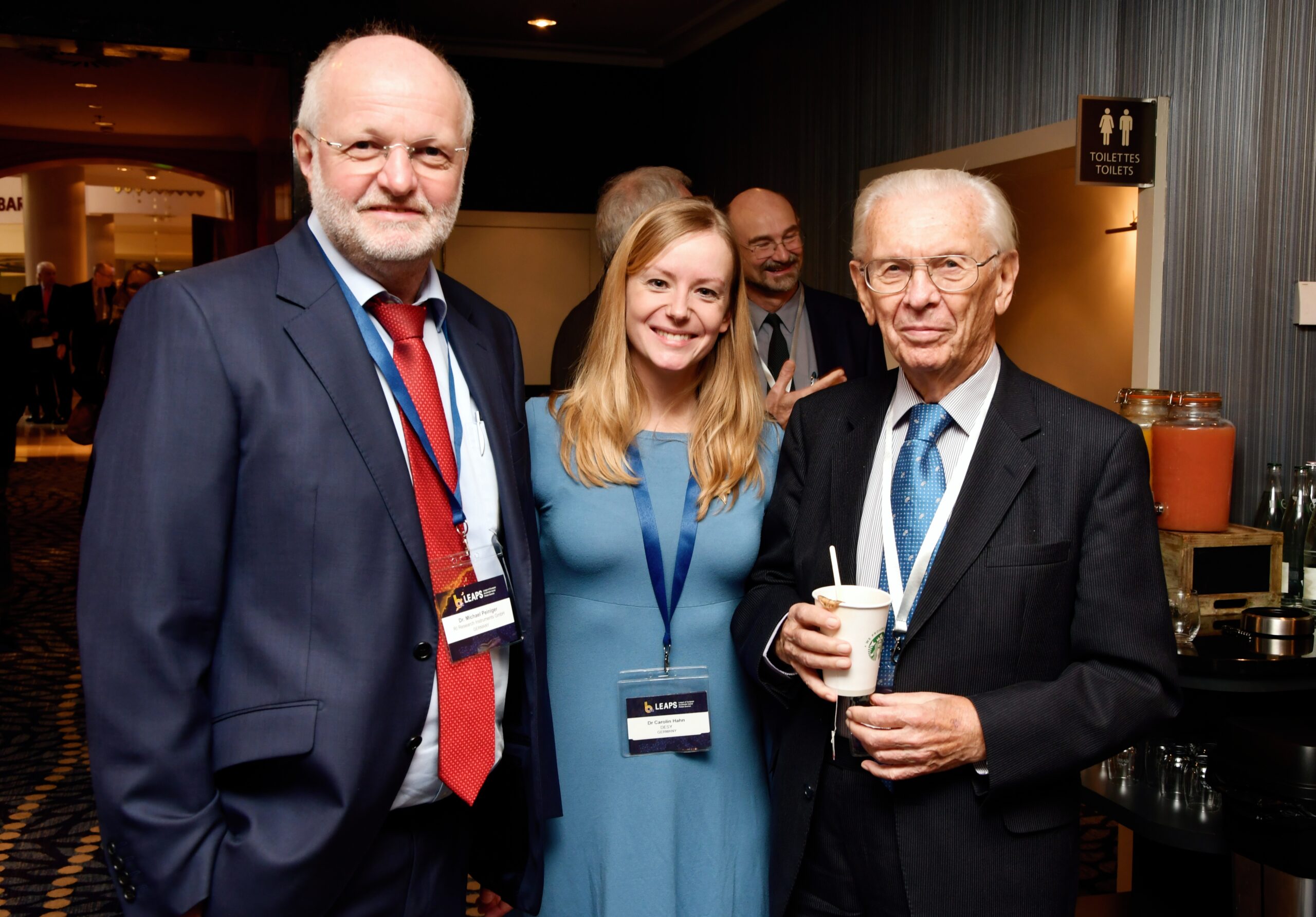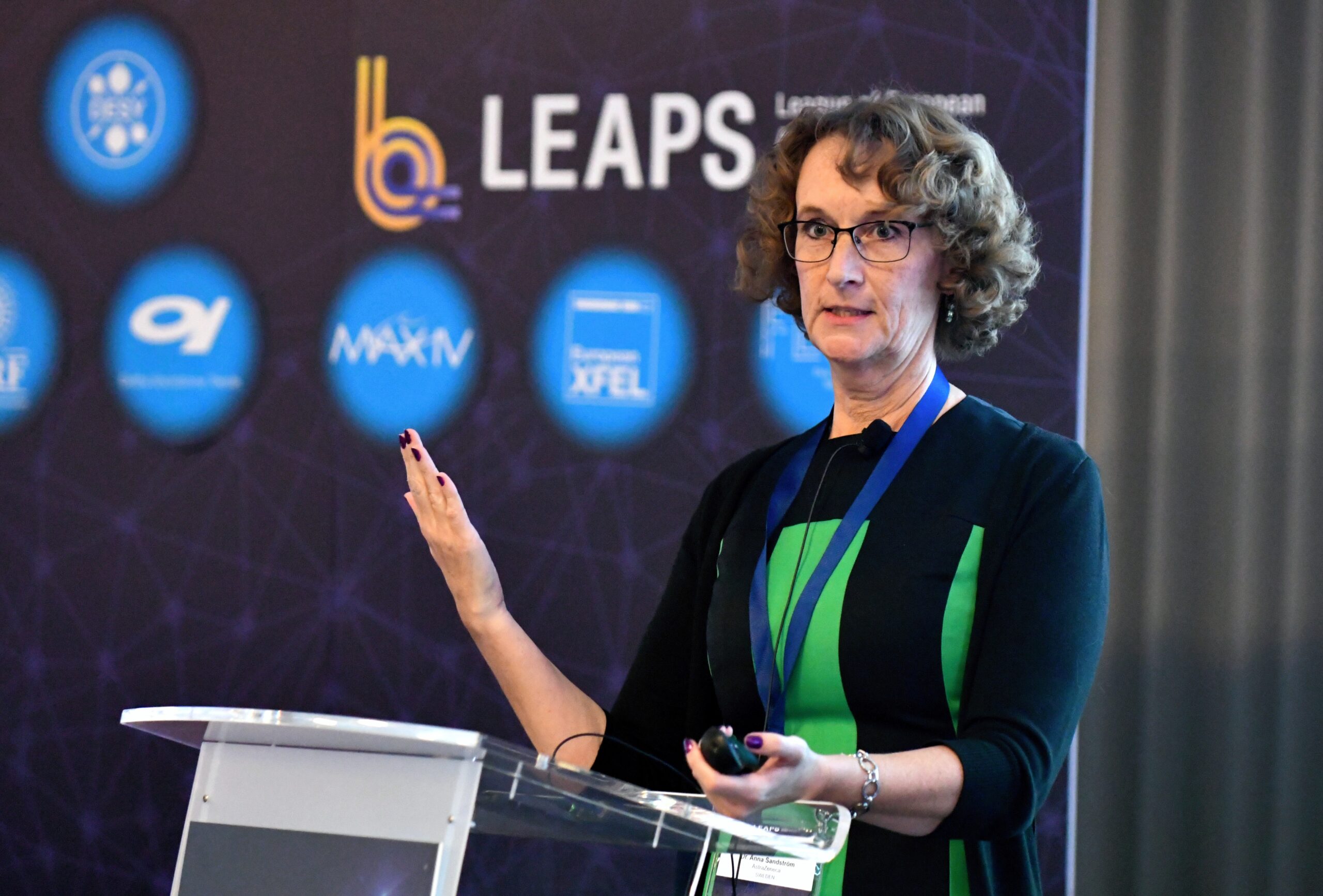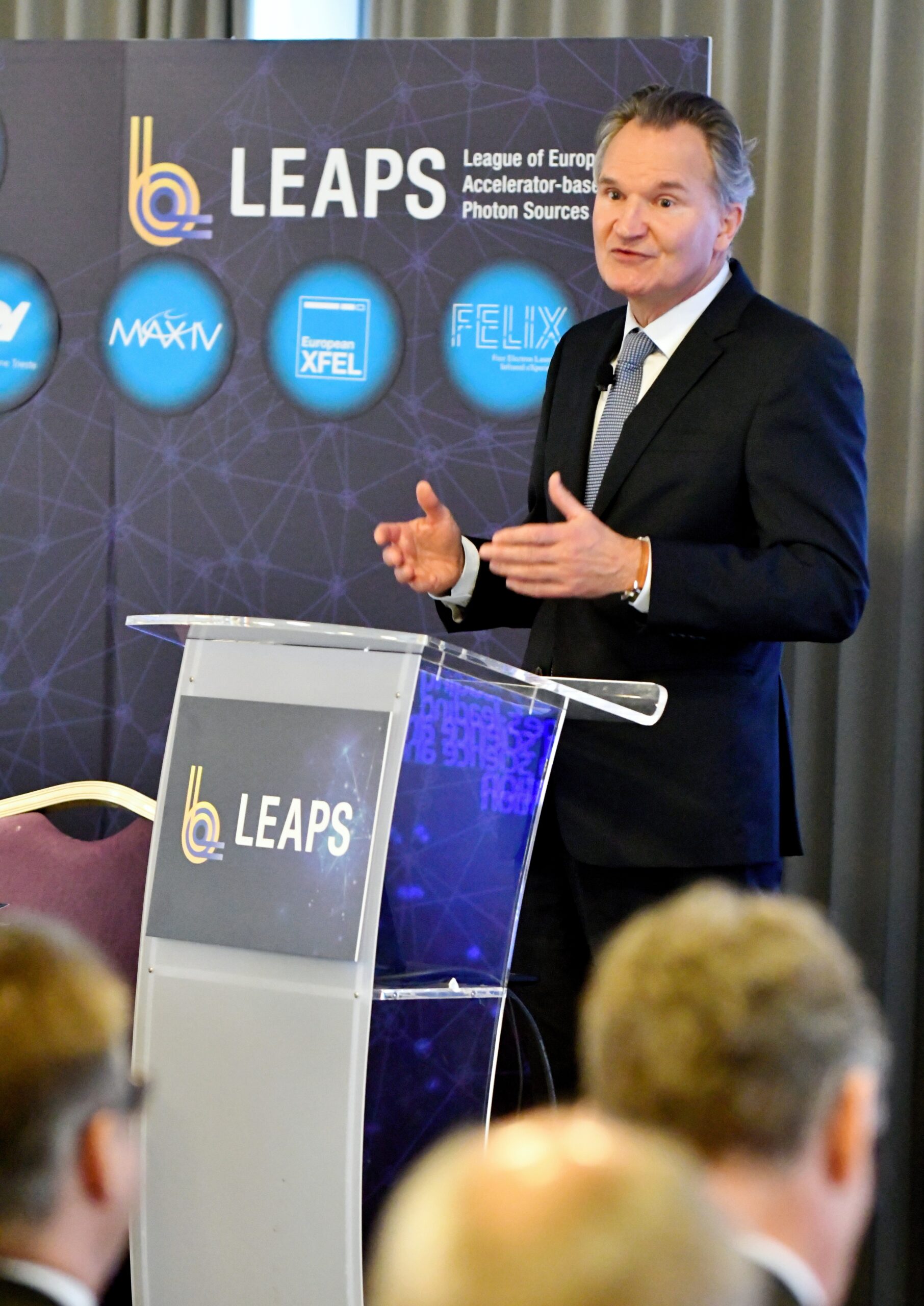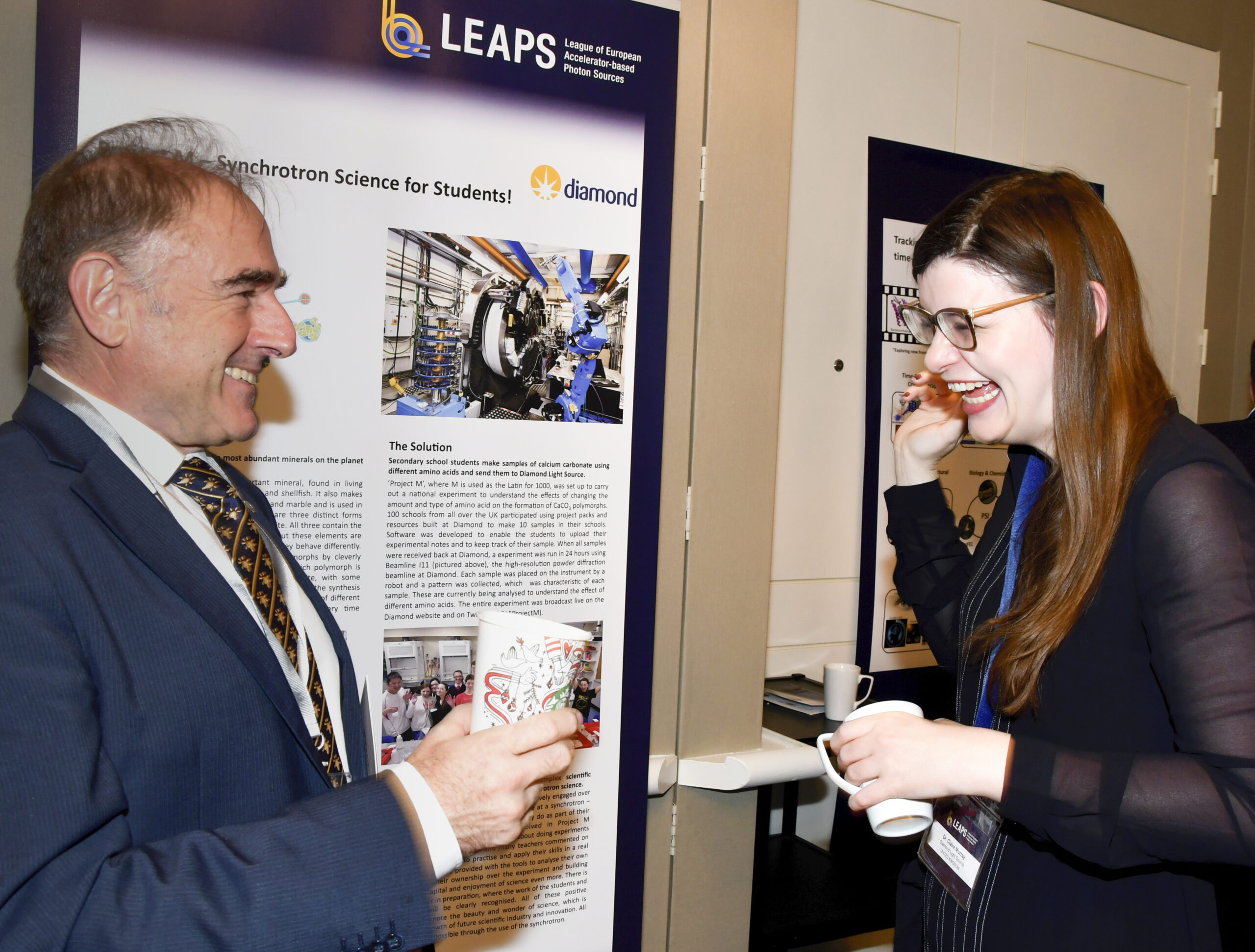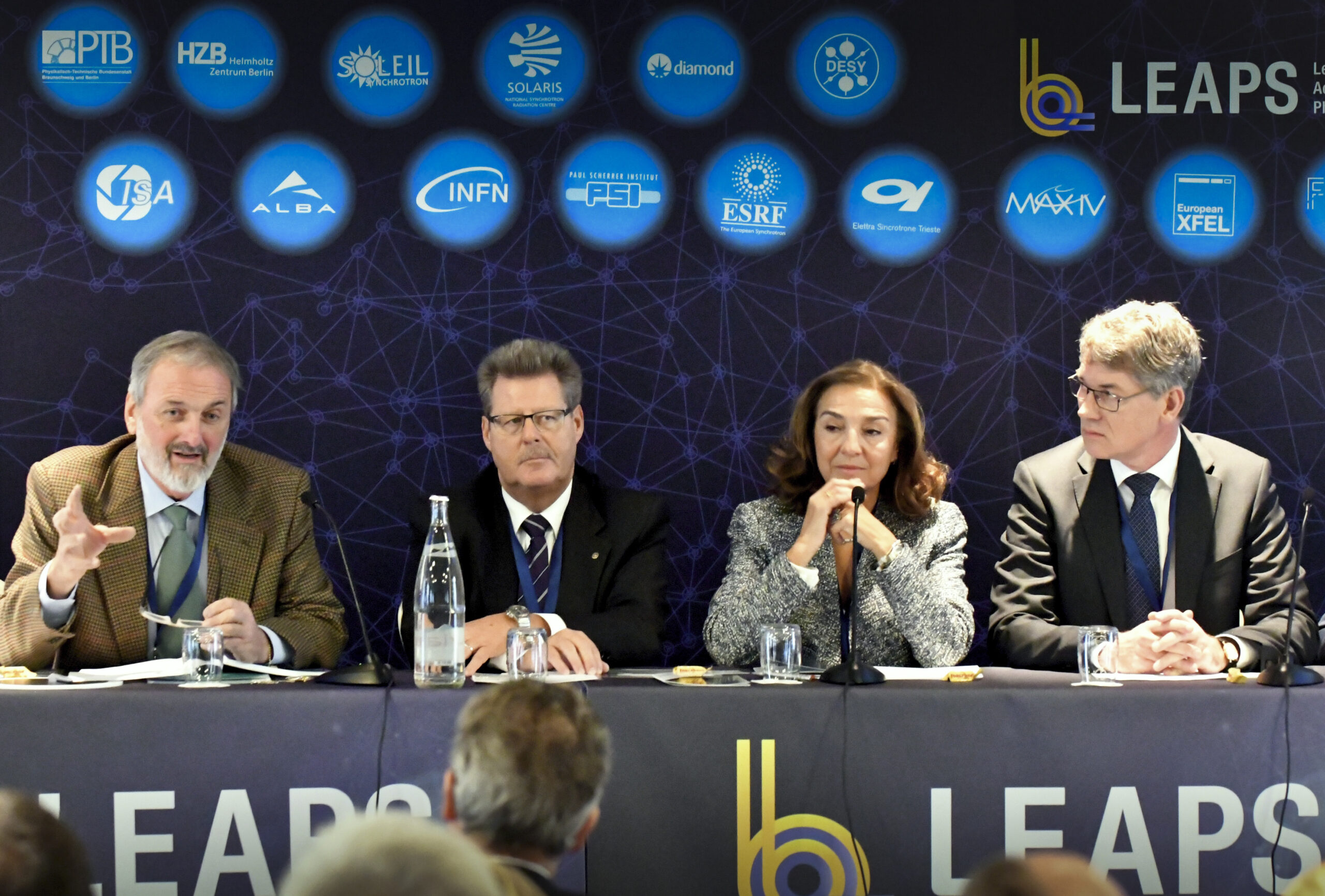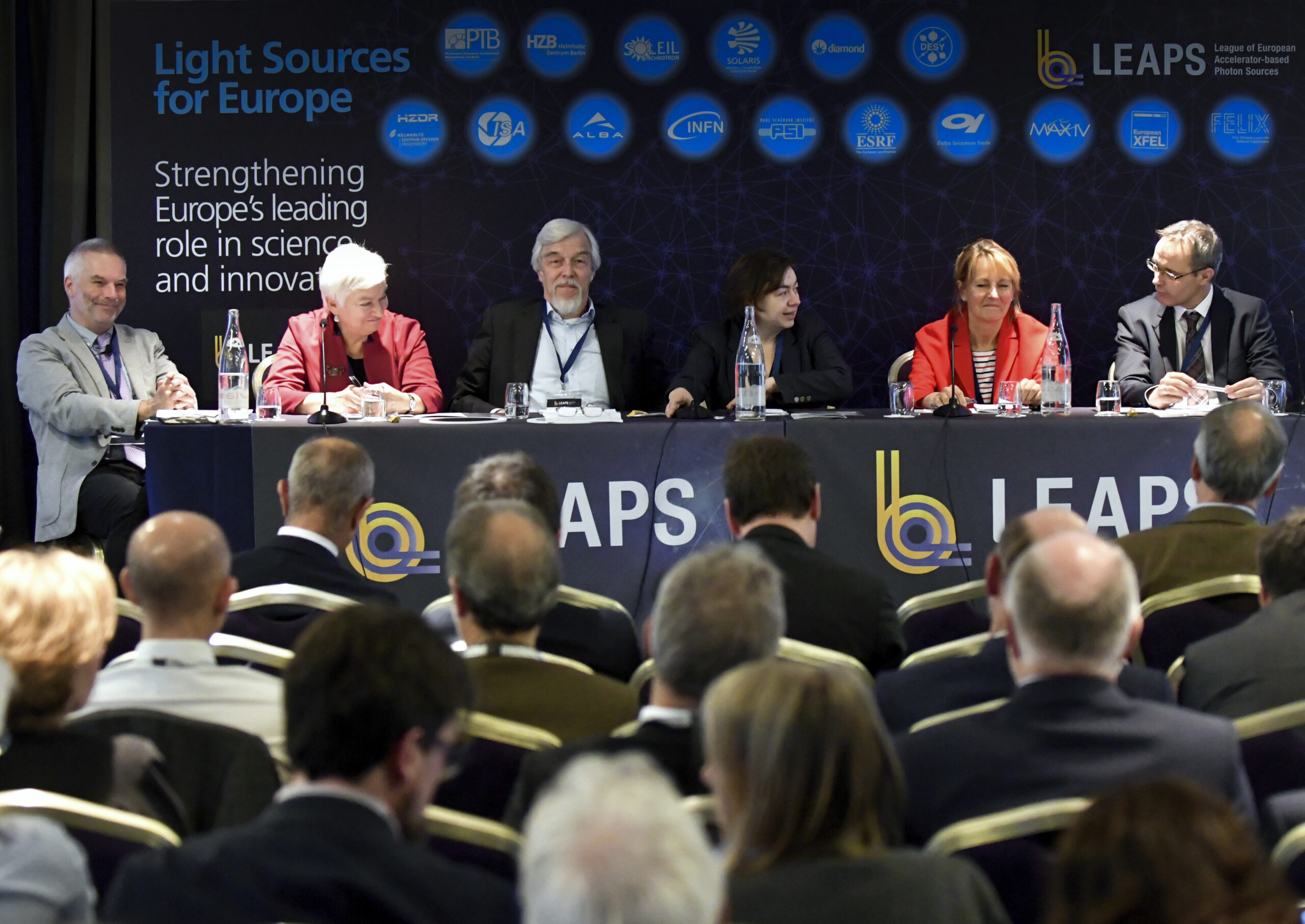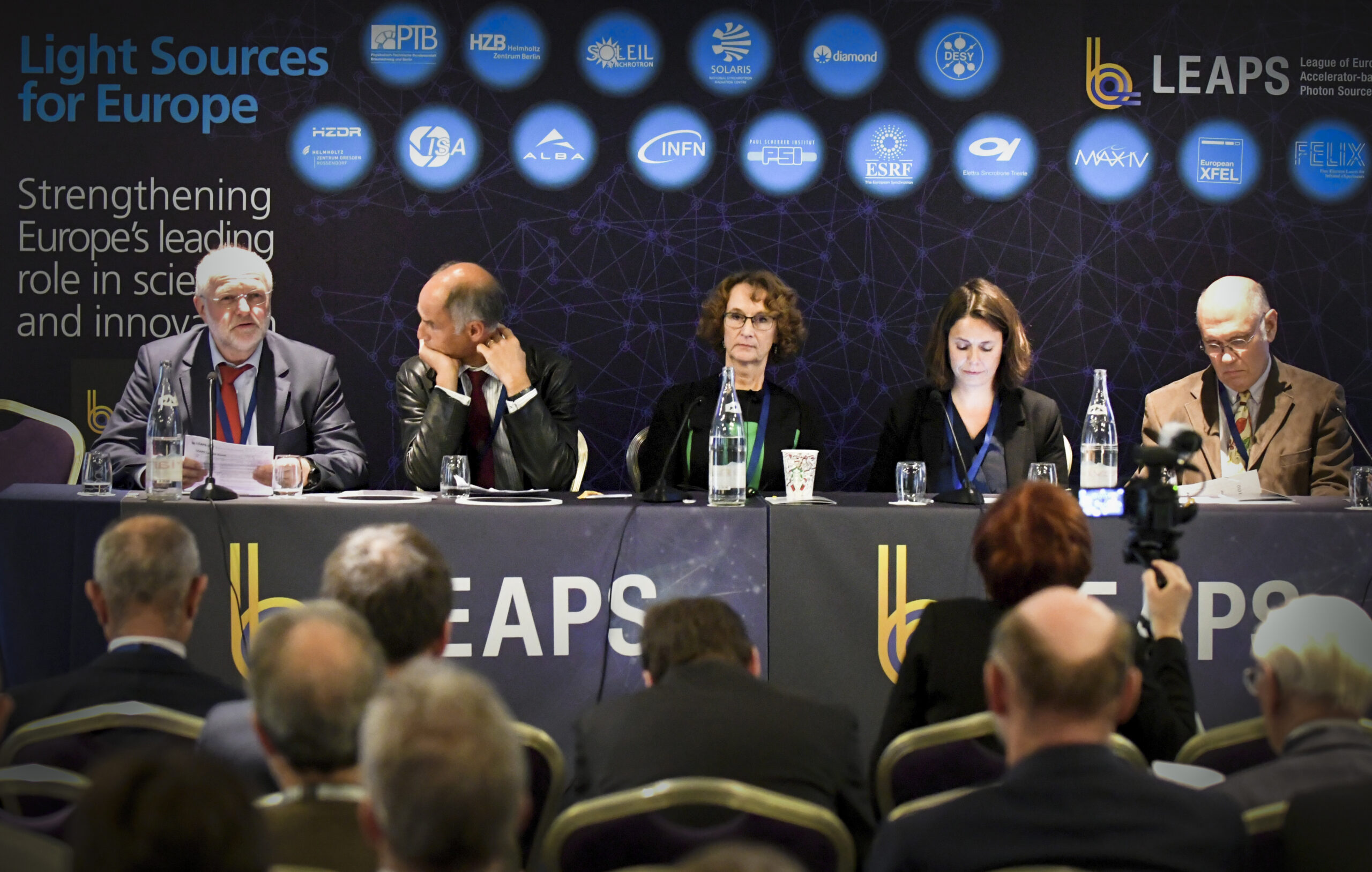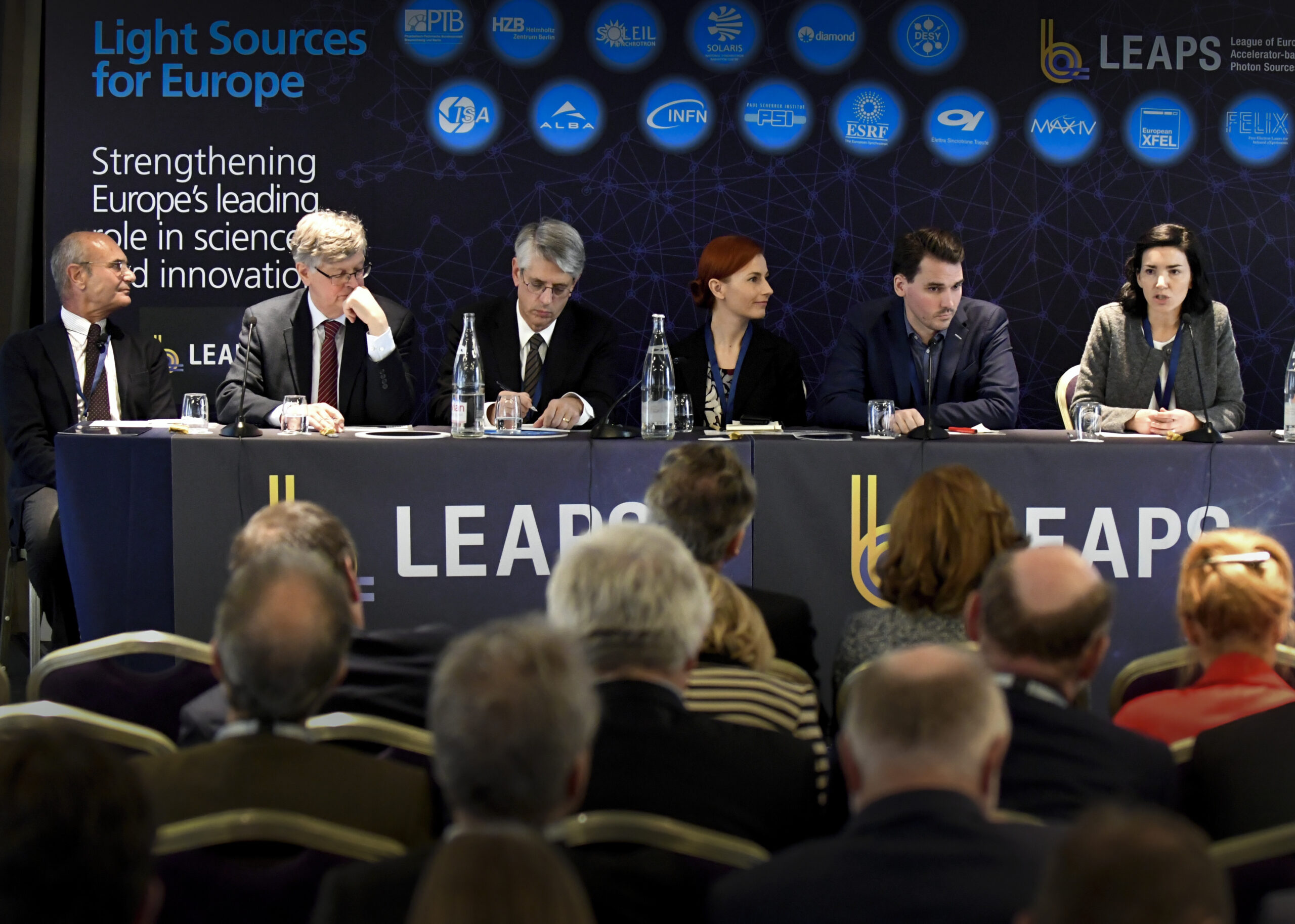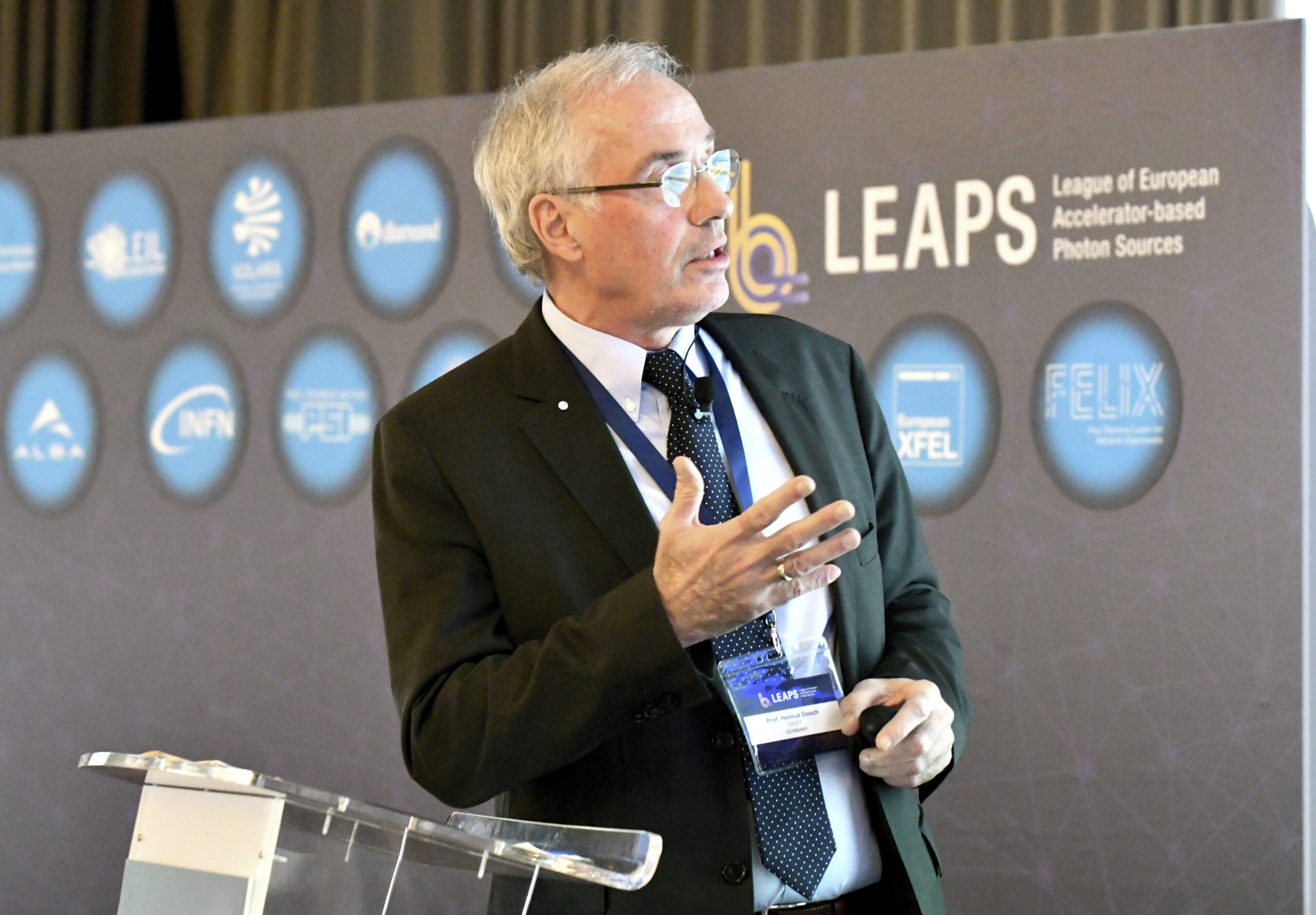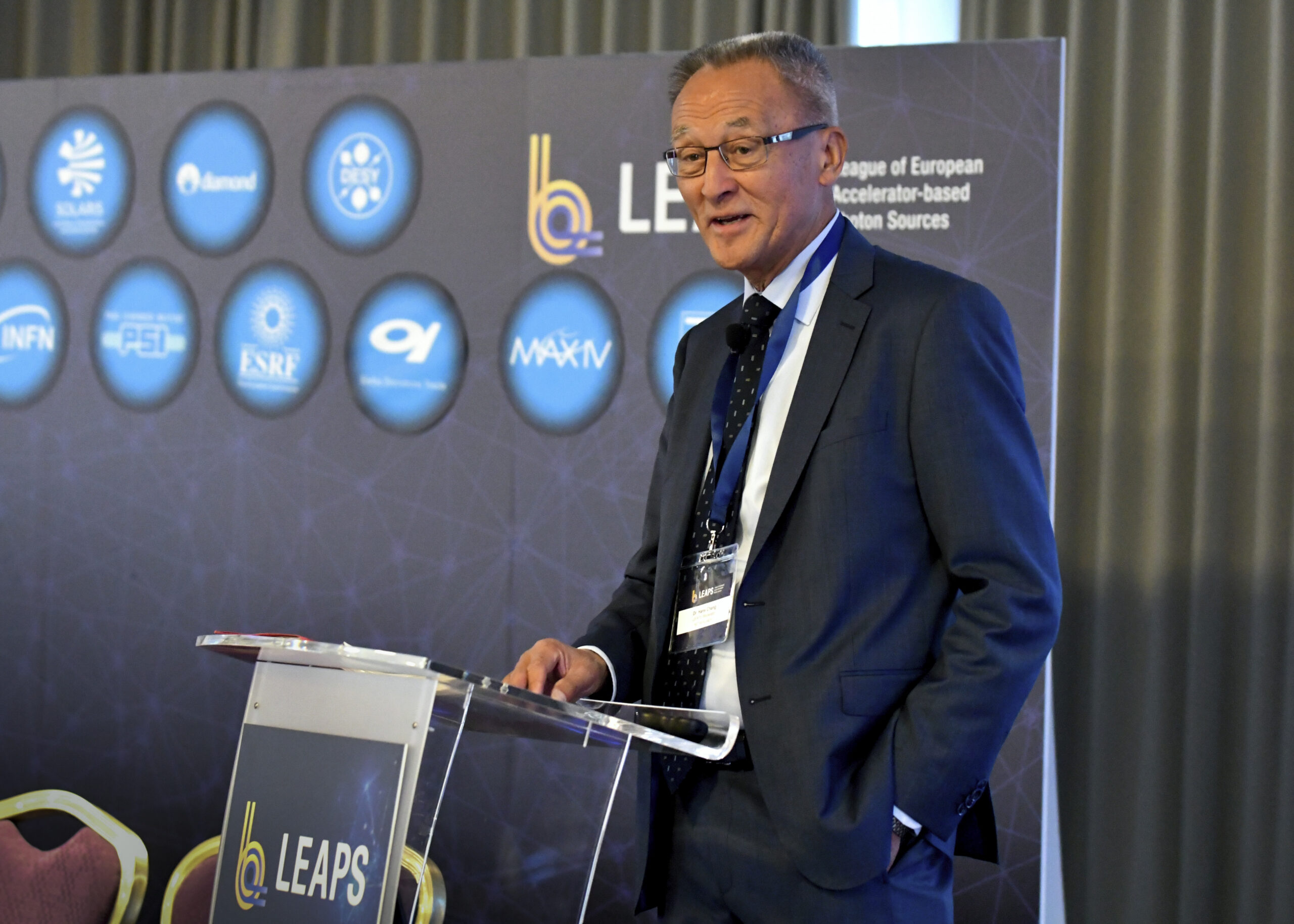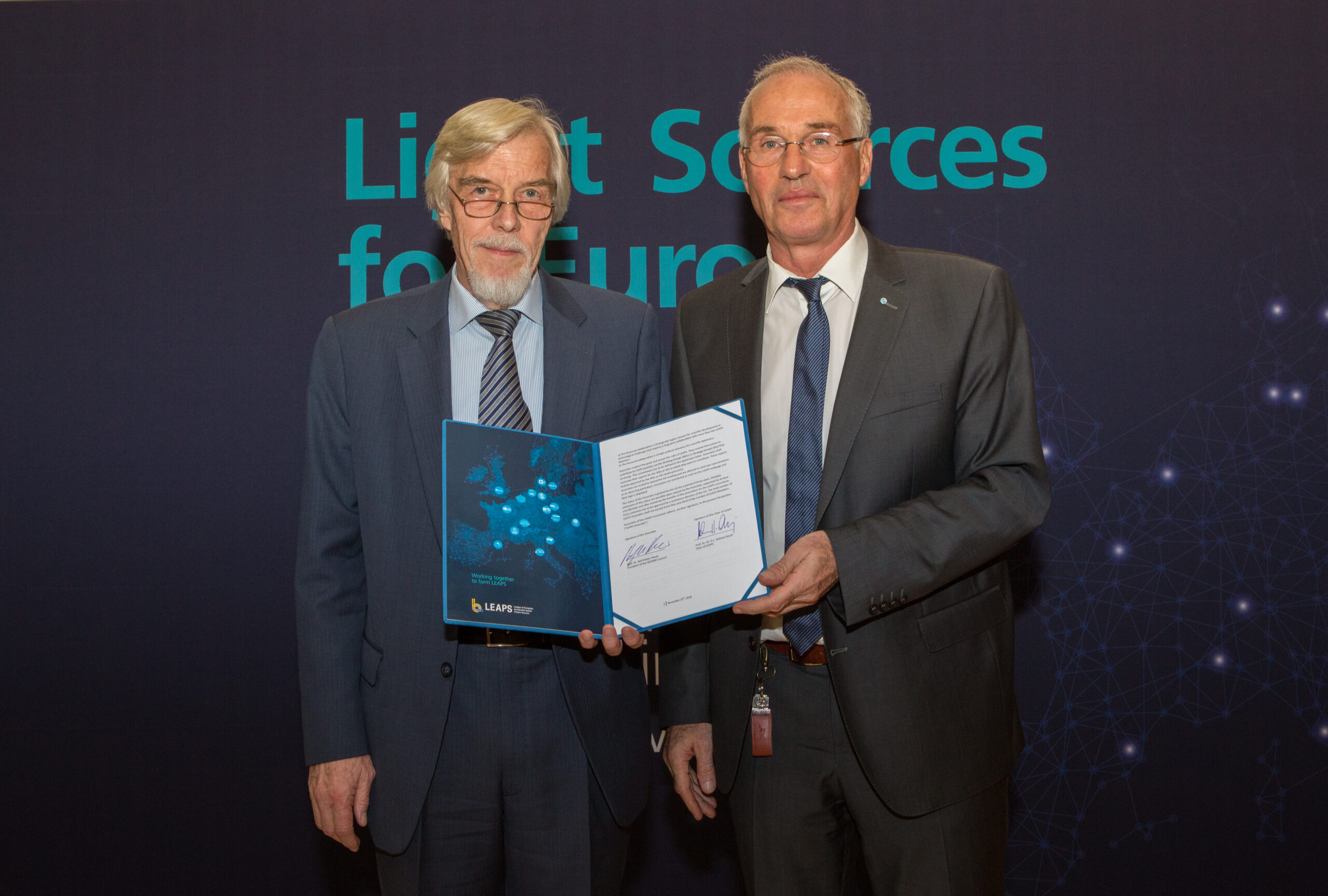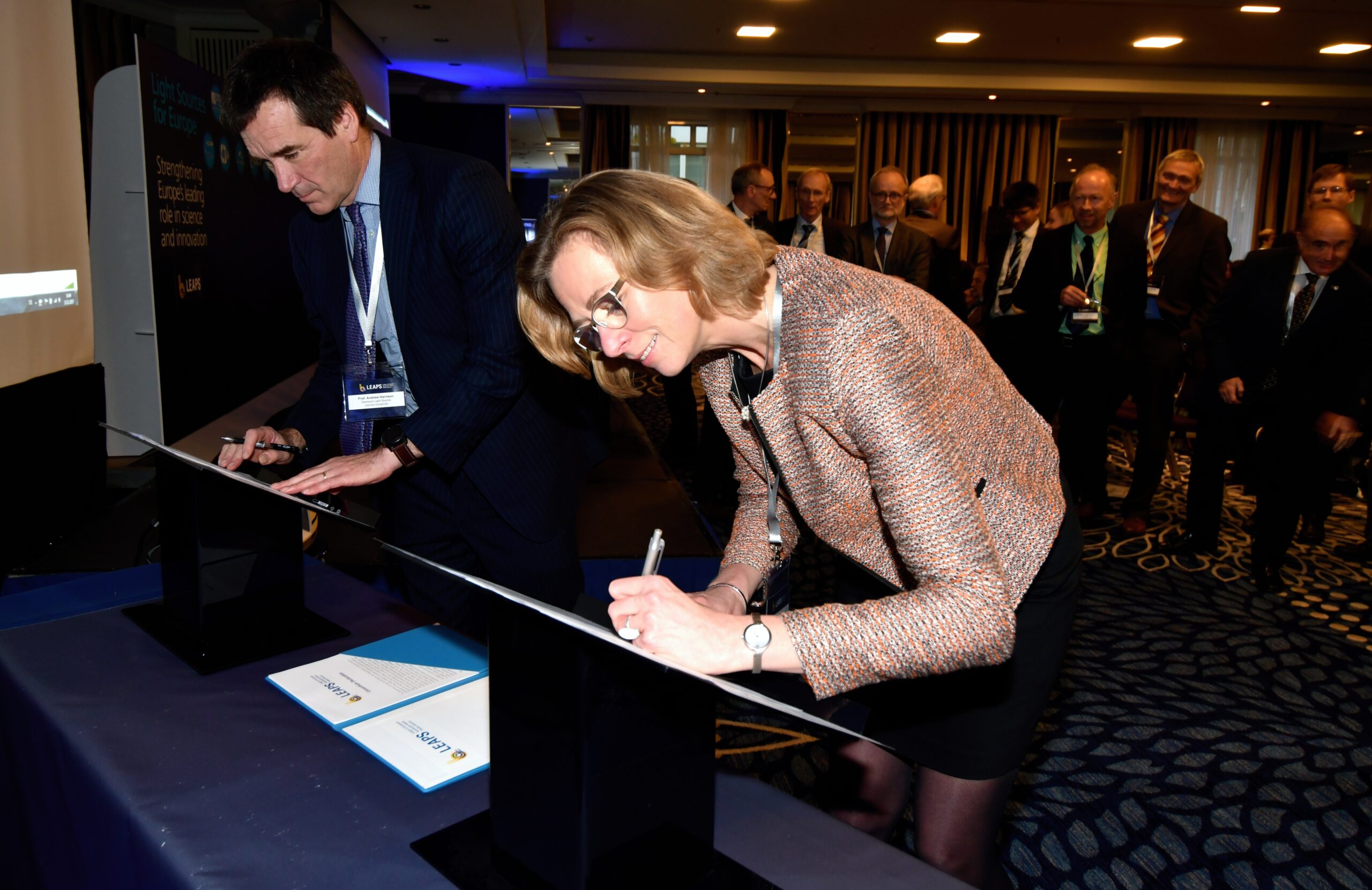LEAPS origins date back from 2017, where a Consortium Declaration was officially signed by representatives of all the member facilities during the LEAPS launch event in Brussels, 13 November 2017.
16 organisations representing 19 light sources facilities across Europe gathered to launch the LEAPS initiative and signed an agreement to strengthen their collaboration. The even was also attended by Robert-Jan Smits, Director-General for Research and Innovation (RTD) at the European Commission, and Giorgio Rossi, Chair of the European Strategy Forum on Research Infrastructures (ESFRI).
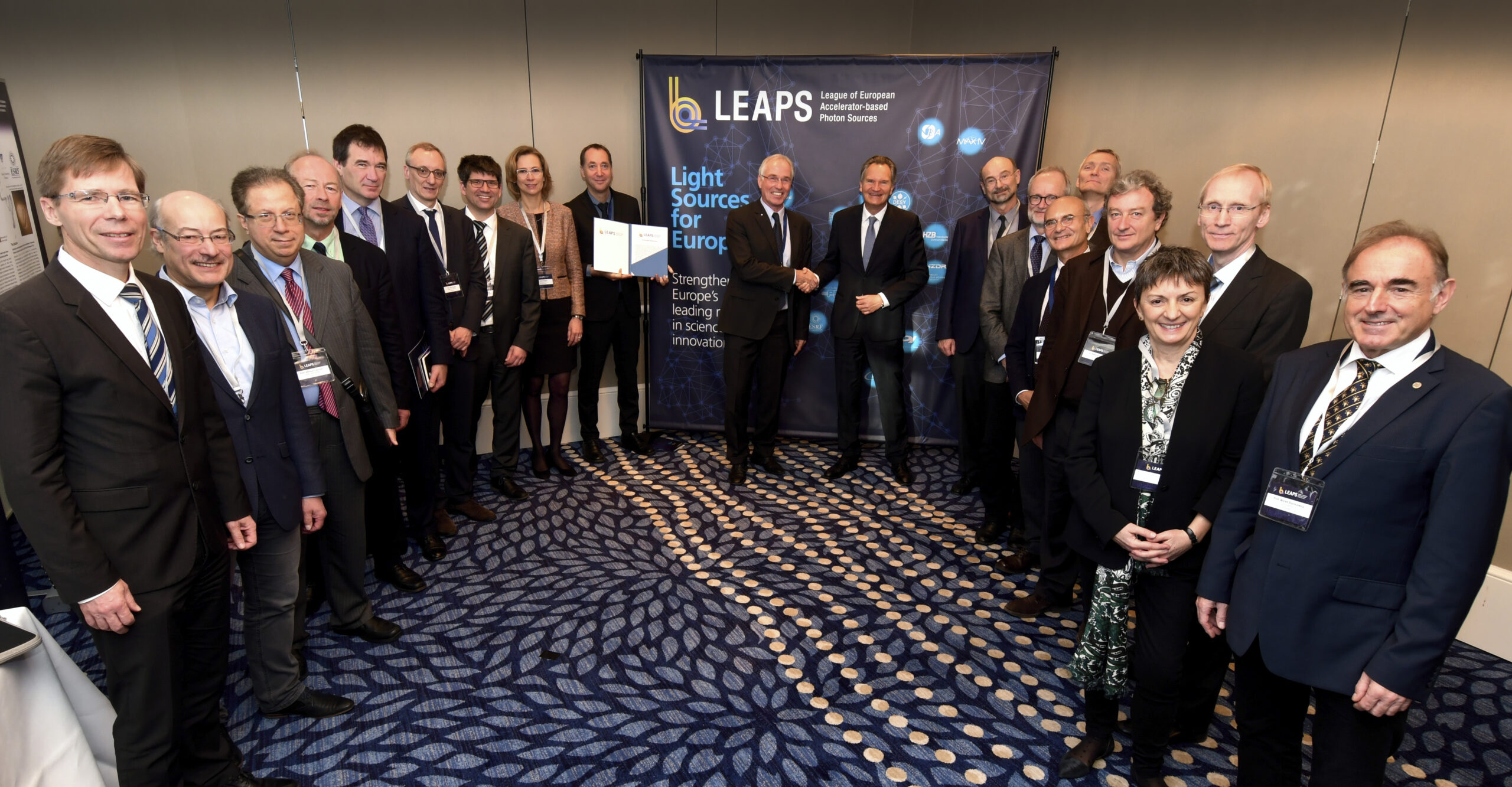
Around 150 participants from all over Europe met up to discuss and provide input to the Board of LEAPS on how to best use the power of its combined voice to ensure that member light source facilities continue to be world-leading.
“If you want to go fast, go alone. If you want to go far, go together“
With this African proverb, Hans Chang, first Chair of ESFRI, opened the meeting and described the intentions behind the LEAPS initiative on opening the launch event in Brussels.
Robert-Jan Smits, Director-General for Research and Innovation, was very pleased to see that the efforts of LEAPS are fully aligned with the policies and programs of the European Union:
“This integration of European research infrastructures is key for the use of resources by avoiding the duplication of efforts and for maximising the scientific, economic and societal impact.”
Robert-Jan Smits continued by describing why he likes LEAPS: “The first reason is that you have made it clear that you want to be inclusive in your integration efforts; different countries, many facilities not only in Europe but also across the globe. The second reason is that one of your objectives is to strengthen the interaction with industry, striving towards optimal exploitation of synchrotron and FEL user facilities for industrial research. Unlocking the innovation potential of research infrastructures and stimulating industry engagement is one of the priorities which we have identified in our recently published document on the long-term sustainability of European research infrastructures. The third reason is that you embrace open science. You make it quite clear in your position papers that you want to share data, curate data, make data interoperable, and work together with the European Commission on creating these European Open Science Clouds.”
Find the full meeting report at Synchrotron Radiation News
